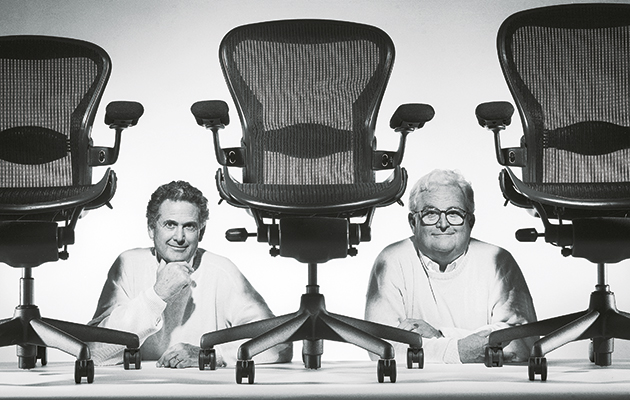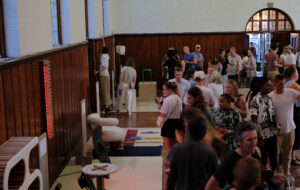|
|
||
|
Launched during the dotcom boom, Herman Miller’s swivel chair was less a symbol of a freewheeling economy, more an example of how good design can civilise us all For designer Bill Stumpf, good design was above all a civilising force. A quiet understanding that small moments of generosity – more car headroom, better toilets at a sporting arena – could make us fundamentally better people. In the manner of a kindly but slightly exasperated uncle, he set out his observations and frustrations with the modern world in his 1998 book The Ice Palace That Melted Away. While too mannered to be described as a manifesto, the book nevertheless revealed Stumpf’s deep belief in his craft and his scepticism regarding the increasing speed at which we live our lives under the guise of greater efficiency. Apt then that Stumpf’s enduring legacy, along with that of his co-designer Don Chadwick, was a product that encouraged inertia. Launched in 1994, the Aeron chair for Herman Miller had its genesis in the pair’s research into a chair for the elderly, also for Herman Miller. It became an instant classic, already deemed worthy of MoMA’s permanent collection by the time it was unveiled to the European market. It was a game-changer for the contract furniture industry, its taut (but adjustable) mesh back challenging the prevailing notion that foam equalled comfort. It was a labour of love. The designers reportedly sent Herman Miller’s engineering department scurrying back to the lab when a diminutive test subject had to get out of the chair to adjust it. It took another year of tweaking to solve that particular issue. Even given the wide range of possible adjustments, it still came in three sizes: small, medium and, in a resigned acknowledgment of the ever-expanding American office worker, large. Aeron was rife with contrast. The bulky undercarriage housing the seat mechanism remained true to a kind of muscular V8 American sensibility, which clearly envisaged the expression of engineering as a virtue. But the Aeron was far from a blunt object. The seat back, taut with its plastic mesh, peacocks softly outwards, while the seat and back move in tandem, avoiding the schoolmarmish corrective of preceding office chairs. But civility came at a premium. The Aeron retailed at around £1,000, which placed it in a bracket beyond most companies. Conversely, the price tag ensured the Aeron quickly became a status symbol for those with deeper pockets. Part of this was down to timing. Aeron hit the market at the apex of the dotcom boom, and the chair became as much a symbol of the new economy as ping pong tables and exposed brickwork. Crucially, the high-tech black and chrome aesthetic appealed to the analogue guard in equal measure. It captured a moment for Herman Miller, too. The American furniture giant, which had unwittingly invented the ultimate signifier of workplace ennui, the office cubicle, years before, regained its reputation as an innovator. To date, the company has sold around 7.5 million Aerons worldwide. Now, nearly 25 years after its launch, Herman Miller has returned to Stumpf and Chadwick’s design, rebooting the Aeron with a little more adjustability and a little less weight, but essentially it is a case of meet the new boss, same as the old boss. It proved to be Stumpf’s defining moment. The designer died, aged 70, in 2004, but his message of civility endures. In fact, it feels more relevant than ever. This article first appeared in Icon 164 – read more about the issue |
Words James McLachlan |
|
|
||

















